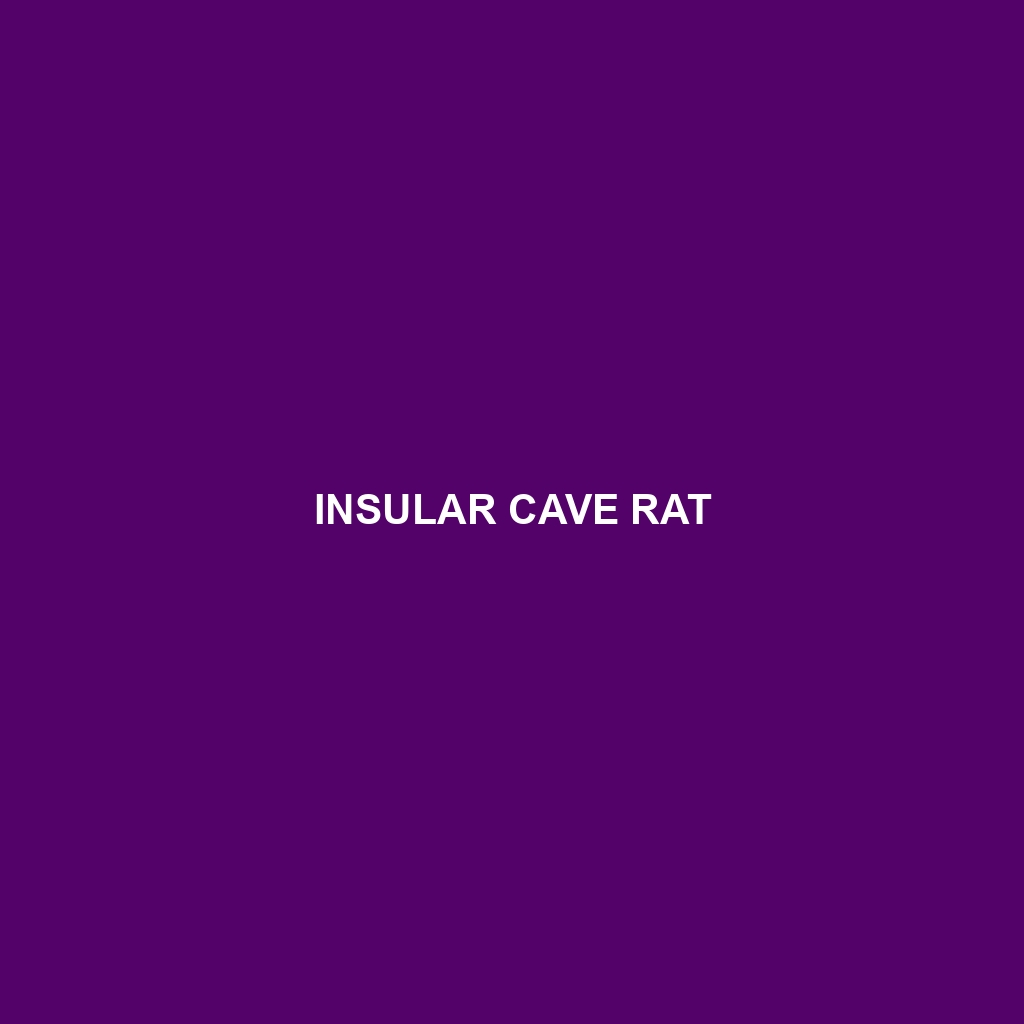Common Name: Insular Cave Rat
Scientific Name:
Habitat:
The Insular Cave Rat is primarily found in the limestone caves of tropical islands within the Caribbean Sea, particularly in the Lesser Antilles. These rats favor humid environments with rich vegetation surrounding their cave systems, often residing in dense forests and mountainous regions. The species thrives in solitude within these secluded ecosystems, making it highly dependent on specific geographical and environmental conditions.
Physical Characteristics:
The Insular Cave Rat is a medium-sized rodent, typically measuring between 20 to 30 centimeters in length, with a tail that adds another 15 to 25 centimeters. This species is characterized by its soft, dark brown fur, which provides excellent camouflage against the rocky cave surfaces. Its large, round ears and prominent eyes are distinctive, aiding in nocturnal navigation. The rat’s long, slightly curved claws are adapted for climbing and burrowing in its cave environment.
Behavior:
Insular Cave Rats exhibit nocturnal behavior, which means they are most active during the night. They are known for their solitary nature but can sometimes be observed in small groups under certain conditions. These rodents are skilled climbers and often navigate their cave systems by jumping and climbing across rock formations. Their vocalizations, including soft squeaks, serve as communication signals with one another, especially during mating seasons.
Diet:
The diet of the Insular Cave Rat primarily consists of fruits, seeds, and roots foraged from the surrounding forest. These rodents are opportunistic feeders, occasionally consuming insects and other small invertebrates. Their feeding habits play an essential role in seed dispersal and the maintenance of vegetation health within their habitat, enhancing their ecological significance.
Reproduction:
The Insular Cave Rat breeds year-round, with peak activity during the warmer months. Females typically give birth to litters consisting of two to four offspring after a gestation period of approximately 30 days. The young are altricial, meaning they are born hairless and helpless, relying heavily on maternal care for survival. Parental investment is significant, with mothers providing nourishment until the young are capable of independent foraging.
Conservation Status:
The Insular Cave Rat is currently classified as endangered due to habitat loss, predation from invasive species, and climate change. Conservation efforts are critical to ensure the survival of this unique rodent, with habitat preservation and restoration being essential strategies for their protection.
Interesting Facts:
One fascinating aspect of the Insular Cave Rat is its unique adaptation to cave life, allowing it to thrive in an environment with minimal light. Interestingly, this species has been observed using echolocation-like skills to navigate through its dark habitat. Moreover, historical accounts suggest that these rats may exhibit social behaviors unusual for their species, leading researchers to explore the complexities of their social structures further.
Role in Ecosystem:
The Insular Cave Rat plays a vital role in its ecosystem as both a herbivore and prey for larger predators. By consuming various plant materials, these rats serve as seed dispersers, contributing to the diversity and resilience of their forest habitats. Additionally, they are a crucial food source for predators such as snakes and birds of prey, representing an integral part of the island’s food web.
